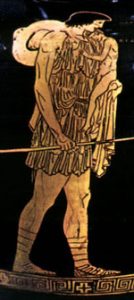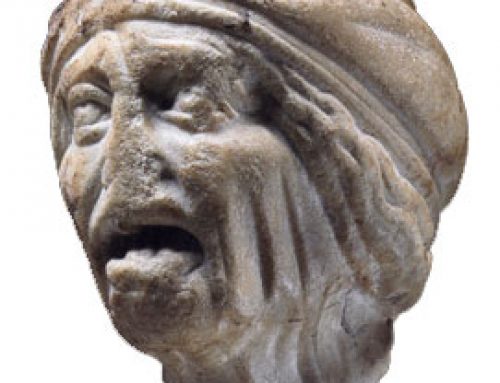
Infanticide? Pasiphae holds the baby Minotaur
What is infanticide?
From the Sumerians down to the time of Augustine, all over Europe and Asia, most people agreed that if you had a newborn baby that you didn’t want, you could kill it. Or at least you could abandon it somewhere and not take care of it. Killing a baby is infanticide, and leaving it somewhere is exposure.
More about life expectancy
More about the Sumerians
Life in early China
And among the Aztec
Why did people expose their babies?
Sometimes, the father decided whether to keep a baby or not. Of course most fathers wanted to keep their babies. And most of the time they did. But sometimes they felt raising their baby was not the right thing to do.
Why was it usually fathers?
Illness and disability
Sometimes fathers or mothers decided to expose a baby if it seemed to be sick or for some reason was not likely to live anyway. If there was something seriously wrong with the baby’s heart or stomach, then ancient people could not do surgery to fix that. The baby would probably die anyway in a few days.
Ancient challenges and disabilities

A shepherd takes the baby Oedipus to expose him, as his parents ordered.
Other babies were exposed because they were physically challenged. Maybe they couldn’t see or hear. Or they were born with only one arm or one leg, or with spinal bifida. Maybe their parents felt they couldn’t take care of them. (But some people did care for their physically challenged babies.)
Twins and girls
Sometimes if there were twins, the parents would expose one of the two babies, because people thought twins were unlucky. Sometimes parents abandoned girl babies, because they wanted a boy.
Girls in ancient China
Girls in West Asia
Women in ancient Greece
Poverty and starvation
In very poor families, sometimes parents exposed their babies because the family didn’t have enough food to feed everyone. If there wasn’t enough food to go around, the parents might decide it was better to give the food to the older kids and save them.
Infanticide and slavery

Enslaved woman holding a baby
Other babies were abandoned by other people, not their parents. For slaves, their owner decided whether to keep them or abandon them. Even some free people were so much under the power of the government or a rich patron that someone else would decide for them. In ancient Sparta, for example, the government decided whether you could keep your baby.
Slavery in ancient Rome
History of slavery
What was Sparta like?
Exposure and adoption
Most of the babies who were exposed probably died. But people who couldn’t have babies themselves and wanted to adopt a baby sometimes took one home. Slave dealers sometimes picked up exposed babies and raised them as slaves. They sold the children when they grew up, if they survived.
Greek theater and exposure
Mothers and fathers who had to expose their babies always wanted to think that their baby had been saved (this is the plot of many Greek and Roman plays – Oedipus, for example).
Oedipus Rex
Menander’s plays
Plautus
Terence
Christianity and abandonment
After most people in Europe converted to Christianity, around 400 AD, infanticide and exposure became less common.
History of Christianity
Theodosius and conversion
Early medieval churches
The Church said that babies had souls too and so it was murder to kill them or let them die. Still this did not stop many people from leaving babies on the steps of churches for somebody else to take care of. These abandoned babies often also died.
More about slavery
More about ancient Sparta
And more about women in ancient Greece
Bibliography and further reading about infanticide and child abandonment:
The Kindness of Strangers: The Abandonment of Children in Western Europe from Late Antiquity to the Renaissance, by John Boswell



